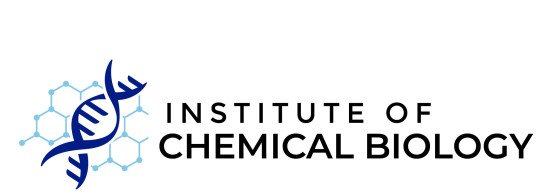Results
- Showing results for:
- Reset all filters
Search results
-
Journal articleElani Y, Law RV, Ces O, 2015,
Vesicle-based artificial cells: recent developments and prospects for drug delivery
, THERAPEUTIC DELIVERY, Vol: 6, Pages: 541-543, ISSN: 2041-5990- Author Web Link
- Cite
- Citations: 13
-
Journal articleBranch T, Girvan P, Barahona M, et al., 2015,
Introduction of a Fluorescent Probe to Amyloid-β to Reveal Kinetic Insights into Its Interactions with Copper(II)
, ANGEWANDTE CHEMIE-INTERNATIONAL EDITION, Vol: 54, Pages: 1227-1230, ISSN: 1433-7851- Author Web Link
- Open Access Link
- Cite
- Citations: 40
-
Journal articleBarriga HMG, Booth P, Haylock S, et al., 2014,
Droplet interface bilayer reconstitution and activity measurement of the mechanosensitive channel of large conductance from Escherichia coli
, Journal of the Royal Society Interface, Vol: 11, ISSN: 1742-5662Droplet interface bilayers (DIBs) provide an exciting new platform for the study of membrane proteins in stable bilayers of controlled composition. To date, the successful reconstitution and activity measurement of membrane proteins in DIBs has relied on the use of the synthetic lipid 1,2-diphytanoyl-sn-glycero-3-phosphocholine (DPhPC). We report the functional reconstitution of the mechanosensitive channel of large conductance (MscL) into DIBs composed of 1,2-dioleoyl-sn-glycero-3-phosphocholine (DOPC), a lipid of significantly greater biological relevance than DPhPC. MscL functionality has been demonstrated using a fluorescence-based assay, showing that dye flow occurs across the DIB when MscL is gated by the cysteine reactive chemical 2-(trimethylammonium)ethyl methane thiosulfonate bromide (MTSET). MscL has already been the subject of a number of studies investigating its interaction with the membrane. We propose that this method will pave the way for future MscL studies looking in detail at the effects of controlled composition or membrane asymmetry on MscL activity using biologically relevant lipids and will also be applicable to other lipid–protein systems, paving the way for the study of membrane proteins in DIBs with biologically relevant lipids.
-
Conference paperWalker RC, Dickson CJ, Madej BD, et al., 2014,
Amber lipid force field: Lipid14 and beyond
, 248th National Meeting of the American-Chemical-Society (ACS), Publisher: AMER CHEMICAL SOC, ISSN: 0065-7727 -
Journal articleDickson CJ, Madej BD, Skjevik AA, et al., 2014,
Lipid14: The Amber Lipid Force Field
, JOURNAL OF CHEMICAL THEORY AND COMPUTATION, Vol: 10, Pages: 865-879, ISSN: 1549-9618- Author Web Link
- Cite
- Citations: 868
-
Conference paperNickdel MB, Lagarto JL, Kelly DJ, et al., 2014,
Autofluorescence lifetime metrology for label-free detection of cartilage matrix degradation
, Conference on Optical Biopsy XII, Publisher: SPIE-INT SOC OPTICAL ENGINEERING, ISSN: 0277-786X -
Conference paperMadej BD, Dickson CJ, Walker RC, et al., 2013,
Modular amber lipid force field for the simulation of complex membranes and membrane bound proteins
, 245th National Meeting of the American-Chemical-Society (ACS), Publisher: AMER CHEMICAL SOC, ISSN: 0065-7727 -
Journal articleMak LH, Knott J, Scott KA, et al., 2012,
Arylstibonic acids are potent and isoform-selective inhibitors of Cdc25a and Cdc25b phosphatases
, BIOORGANIC & MEDICINAL CHEMISTRY, Vol: 20, Pages: 4371-4376, ISSN: 0968-0896- Author Web Link
- Open Access Link
- Cite
- Citations: 11
-
Journal articleWormit A, Butt SM, Chairam I, et al., 2012,
Osmosensitive Changes of Carbohydrate Metabolism in Response to Cellulose Biosynthesis Inhibition
, PLANT PHYSIOLOGY, Vol: 159, Pages: 105-117, ISSN: 0032-0889- Author Web Link
- Cite
- Citations: 50
-
Journal articleCharalambous K, Booth PJ, Woscholski R, et al., 2012,
Engineering <i>de Novo</i> Membrane-Mediated Protein-Protein Communication Networks
, JOURNAL OF THE AMERICAN CHEMICAL SOCIETY, Vol: 134, Pages: 5746-5749, ISSN: 0002-7863- Author Web Link
- Cite
- Citations: 31
This data is extracted from the Web of Science and reproduced under a licence from Thomson Reuters. You may not copy or re-distribute this data in whole or in part without the written consent of the Science business of Thomson Reuters.
